READY TO GET STARTED?
REQUEST A FREE ESTIMATE
Fill out the form below or call (888) 466-7849 for a free, no-obligation estimate.
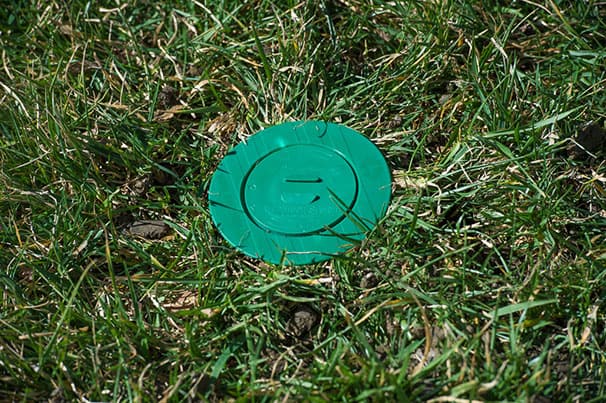
Green circles or disk-like plastic stations in your yard can raise questions, especially for homeowners new to pest protection and construction. Are they waste? Signs of a plant disease? Or could they be serving a more important purpose? Many residents, especially those in new constructions, notice these green zones and are unsure if they’re harmless or a sign of concern. This guide will explain exactly what those green circles are, why they’ve appeared in your yard, and what actions (if any) you should take. If you’re interested in protecting your home and understanding modern termite protection options for new builds, read on for clear answers.
You may spot small, green, plastic objects scattered in the mulch or lawn, often flush with the ground. While it’s natural to wonder if they’re part of garden irrigation or remnants from building projects, these are most likely termite bait stations, specifically from systems such as Sentricon.
Sentricon stations are round, green, low-profile devices installed flush with the soil around the perimeter of homes. These units form part of a targeted system designed to protect homes from subterranean termites, a threat that causes billions of dollars in damage in the US annually.
Bait not Barrier: Unlike chemical barrier treatments, Sentricon uses a strategic approach. Each green station contains termite bait that attracts termites searching for food.
Silent solution: Foraging termites take the bait back to the colony and share it, ultimately wiping out the population and its queen.
Continuous termite protection: The stations are always active, working round the clock to intercept termites before they can harm your home.
You’ll most often see these stations in two scenarios:
If you’ve recently purchased, built, or moved into a home, especially in areas susceptible to termite issues, it’s likely that a pest control company has installed these as part of a comprehensive prevention plan.
Many new homes come pre-equipped with termite protection due to stronger building codes and widespread awareness of risk from termites. If you’re moving into a new development or have undertaken a remodel, you might find these green circles have been placed for your protection.
A proactive homeowner, or one with a history of termite concerns, may have had these stations installed as a year-round protection plan. Unlike one-time treatments, bait stations provide consistent monitoring without the need for repeated chemical reapplications.
One of the reasons Sentricon and similar systems have become so widely adopted is their reputation for well-being and minimal environmental impact.
For maximum effectiveness, a pest control professional should inspect the stations regularly (typically every quarter or as defined in your agreement). During checks, technicians will:
Traditional termite treatments use liquid chemicals to create a barrier. Sentricon takes a different approach, prioritizing environmentally sound practices and long-term colony control.
If you’re not seeing green circles in your yard and haven’t recently discussed termite prevention with a pest control professional, now is the time to consider proactive termite protection. Subterranean termites can invade any home with wood, regardless of age or construction quality. Early detection and prevention are much less costly than repairing damage when an infestation is discovered.
Unexplained green circles in your yard are not a sign of trouble, but of prevention. Termite bait stations, especially Sentricon, represent current best practices for termite protection, featuring protecting, scientific backing, and eco-friendly design.
By understanding what these devices are, why they appear, and how to maintain them, you’re taking a key step in protecting your investment and maintaining your home’s value.
If you spot green stations in your yard, know they are working to keep your home protected and healthy. Keep them visible, in good condition, and notify your service provider of any issues. If you’d like to ensure your new construction is protected, or if you’re unsure if your current home has proper termite defense, contact a licensed pest control professional for advice or an on-site evaluation.
A small green circle today can mean the preservation of your home for decades to come.
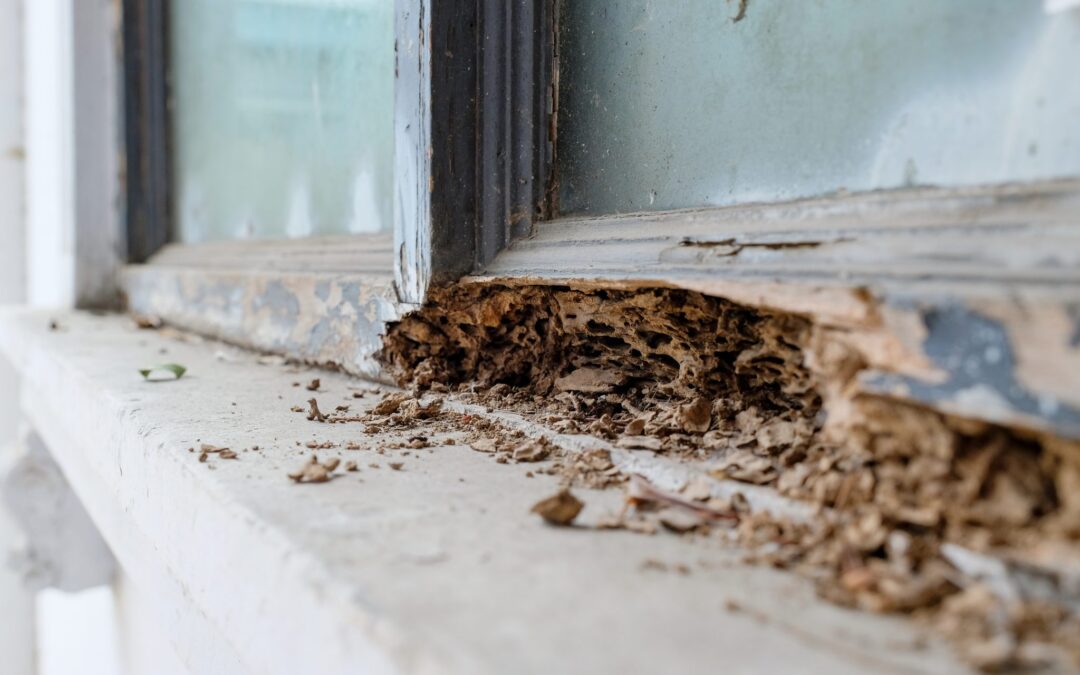
Drywood termites may be small, but their impact on Tennessee homes can be massive. These pests burrow deep into wood, causing hidden structural damage that weakens your property and reduces its market value. Left unchecked, they can lead to costly repairs, hurt resale prospects, and threaten your home’s health. Here’s how to protect your investment.
Unlike subterranean termites, drywood termites don’t need soil to survive. They infiltrate timber in walls, floors, and furniture, often going undetected until damage is severe. The long-term consequences include:
Detecting drywood termites early can save you thousands. Watch for:
Preventative measures are your best defense. Follow these steps:
For a greener solution to infestations, try:
Don’t underestimate the cost of inaction. Drywood termites threaten your Tennessee home’s value and overall health. Act early to spot infestations, prevent damage, and keep your property market ready. Consult pest control professionals to ensure your home remains a secure and termite-free investment.
Ready to get started? Give us a call or click the button below for your FREE termite control quote!
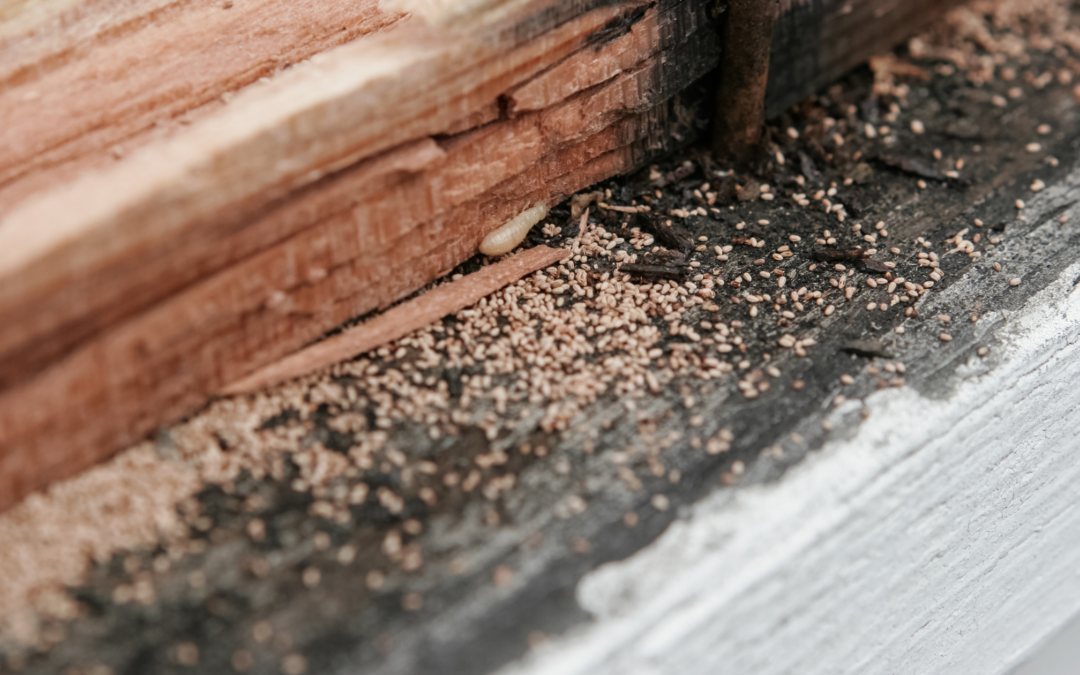
Termites are among the most destructive pests that can invade your home, often causing extensive damage before being noticed. Regular termite inspections by professionals are crucial to protect your property. If you’re searching for “termite inspectors near me,” this guide will help you understand what to expect during an inspection and how to keep termites at bay.
Yes, termite inspectors often examine the interior and exterior of your home. While termites can cause visible damage outside, their most devastating effects occur within walls, ceilings, and other structural elements, making it necessary to inspect inside. Inspectors will check basements, crawl spaces, and attics, as these areas are prone to termite activity.
If termites are detected, your pest control company may recommend the following treatments:
The cost of a termite inspection varies based on factors such as your home’s size and location. Many pest control companies offer free inspections or bundle the cost with treatment plans. Be sure to inquire about pricing when scheduling.
Termite infestations can be devastating, but routine inspections by qualified termite inspectors ensure your property stays safe. If you’re worried about “termite infestation” or “termite damage,” don’t wait until the problem worsens. Contact a reliable pest control company to inspect your home and provide effective solutions.
For trusted termite control services in Georgia, request an inspection today!
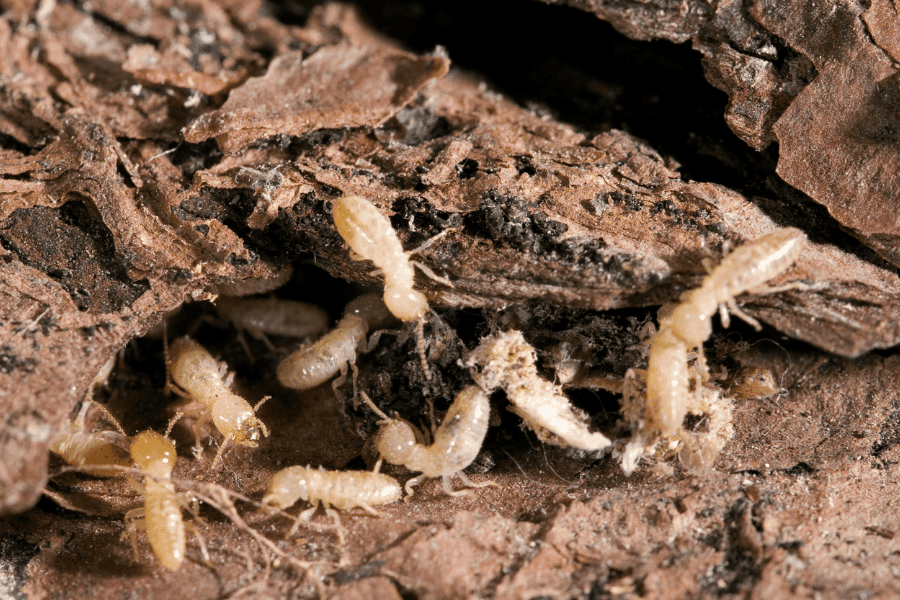
Termites, sometimes called the “silent destroyers”, will cause considerable damage to your Auburn home if left unchecked. In Alabama, subterranean termites are most common, and these tiny insects thrive in the warm, humid climate that we deal with, making termite prevention a crucial part of maintaining your household. Here’s an easy guide on what you need to know to protect your home from termites.
Termites can cause extensive damage to wooden structures, often going unnoticed until significant harm is done. These pests chew through wood, flooring, and even wallpaper, compromising the structural integrity of your home. Repairing termite damage can be costly and time-consuming, which is why prevention is key.
Recognizing the early signs of a termite invasion can help you act before too much damage occurs. Here are a few indicators to watch for:
Early detection of termite damage can save you from more extensive repairs. Look for:
Preventing termites involves proactive measures to make your home less inviting to these pests. Here are some effective strategies:
In Auburn, the warm climate is conducive to termite activity year-round. Local regulations may influence the use of certain treatments, particularly chemical solutions. Consulting with a local pest control professional ensures that you follow guidelines and use the most effective treatments for your home.
Termites may be small, but their potential for damage is enormous. By staying vigilant and implementing preventive measures, you can protect your Auburn home and maintain its value. If you have noticed termite activity or signs at your home, call a pest control company near you as soon as possible. These professionals will provide you with the best plan of action for termite control in order to eliminate and prevent them in the future.

Subterranean termites are a significant concern for homeowners in Georgia, causing extensive damage to wooden structures if left untreated. Understanding how to identify these pests, recognizing the signs of an infestation, and knowing the various treatment options available are crucial steps in protecting your home. In this blog, we will explore what subterranean termites look like, the signs of their presence, the best treatments for eliminating them, and essential prevention tips to keep your home termite-free.
Subterranean termites are small, creamy-white to dark brown insects, typically about 1/8 to 3/8 inch long. They have soft bodies and are often mistaken for ants, though they can be distinguished by their straight antennae, uniform waists, and wings of equal length when swarming. Identifying these termites correctly is the first step in implementing effective termite control.
Recognizing the signs of a subterranean termite infestation early can save homeowners from extensive and costly repairs. Key indicators include:
There are several effective treatments for subterranean termites, each with its benefits and considerations. Here are the most commonly used methods:
Preventing subterranean termites from invading your home is crucial. Here are some practical tips to keep these pests at bay:
Subterranean termites are a serious threat to homes in Georgia, but with the right knowledge and proactive measures, you can protect your property from these destructive pests. Identifying what subterranean termites look like, recognizing the signs of an infestation, and choosing the best treatment method are essential steps in effective termite control. Additionally, implementing preventive measures can help keep your home termite-free. If you suspect a termite infestation, contact a reputable termite control company to conduct a thorough inspection and recommend the best course of action.
By staying vigilant and informed, you can safeguard your home against the costly damage caused by termites.
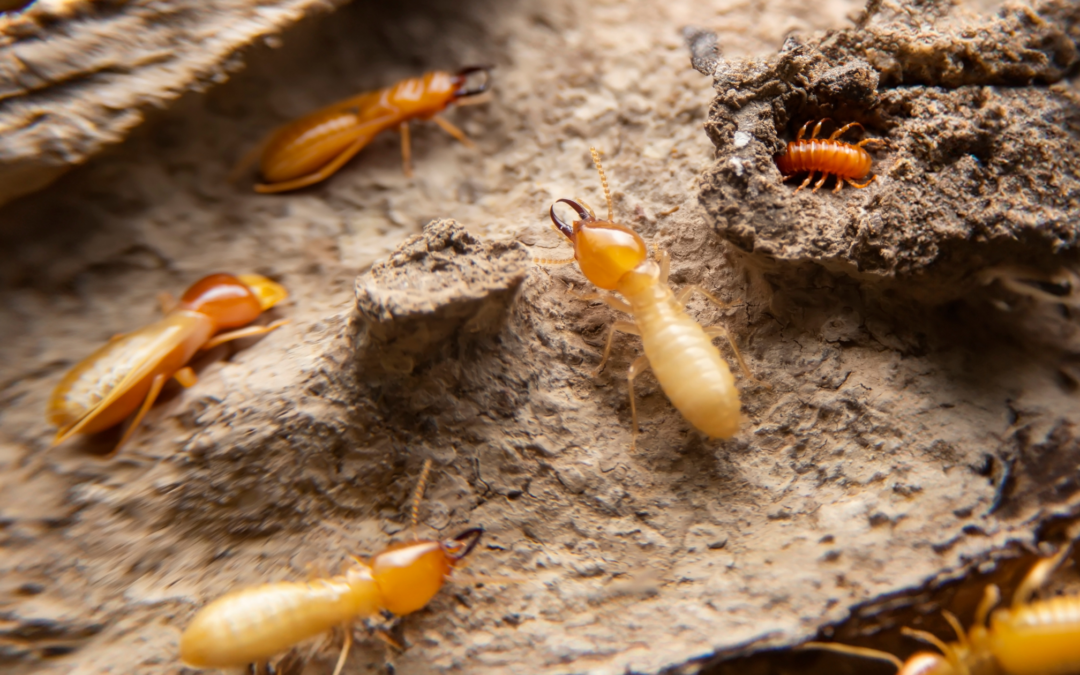
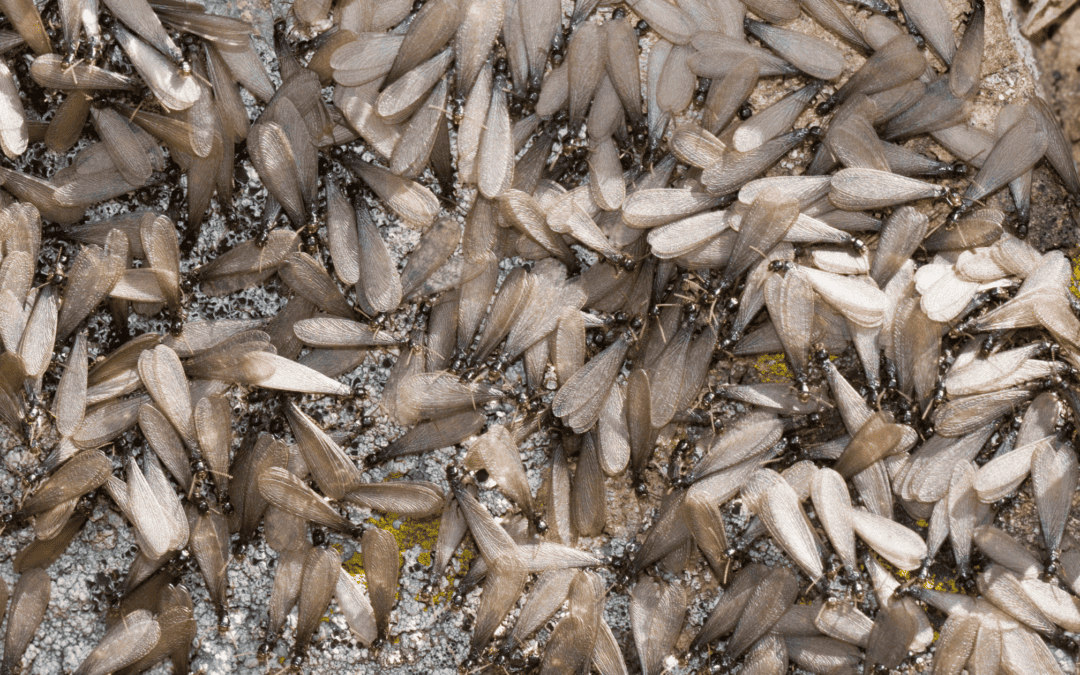
As spring approaches in Georgia, so does the dreaded termite swarming season. For homeowners, this time of year can be particularly nerve-wracking as swarms of termites take flight, searching for new places to establish colonies. Understanding what swarming termites are, how to differentiate them from flying ants, and taking proactive steps to prevent infestations can save you from potential damage to your home. Here’s everything you need to know to prepare for termite swarming season in Georgia.
Swarming termites, also known as alates or swarmers, are reproductive termites tasked with starting new colonies. These winged insects emerge from mature termite colonies in search of mates and suitable locations to establish their own nests. Swarms typically occur in the spring, triggered by warm temperatures and high humidity levels, making Georgia’s climate ideal for termite activity.
Termite swarming season in Georgia typically occurs from late February through May, with peak activity often seen in April. During this time, homeowners should remain vigilant for signs of termite activity both indoors and outdoors.
Distinguishing between swarming termites and flying ants is crucial for effective pest control. While both insects have wings and swarm during the spring, several key differences can help you identify them:
Identifying the signs of termite swarms early can prevent costly damage to your home. Look out for the following indicators:
If you encounter swarming termites in or around your home, it’s essential to act swiftly:
Prevention is key to protecting your home from termite infestations. Here are some tips to reduce the risk of termite damage:
By understanding the behavior of swarming termites, recognizing the signs of infestation, and implementing preventive measures, you can safeguard your home against these destructive pests. Remember, if you suspect a termite problem, don’t hesitate to contact a professional termite control company near you for assistance.
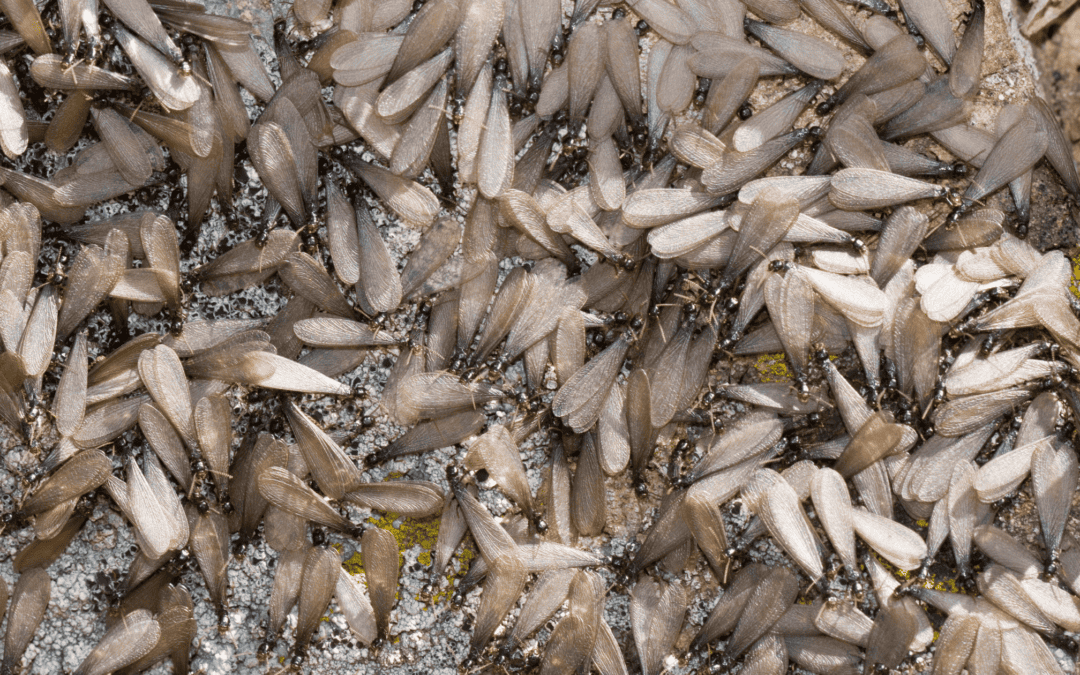
As spring approaches in Georgia, so does the dreaded termite swarming season. For homeowners, this annual event can be a cause for concern, as it signals the potential presence of destructive pests in and around their homes. In this guide, we’ll delve into what swarming termites are, when swarming season occurs, what termite swarms indicate, and crucial tips for termite prevention.
Swarming termites are reproductive members of a termite colony. These winged insects emerge from their nests in large numbers during specific times of the year to mate and establish new colonies. Their primary goal is to find a mate and locate a suitable location to start a new colony, often in or around homes.
In Georgia, termite swarming season typically occurs in the spring, between March and May. However, it can vary depending on factors such as temperature and humidity. Warm, humid conditions following rainfall trigger swarming behavior in termites, making spring the peak season for infestations.
The presence of termite swarms near or inside your home is a strong indicator of an existing termite infestation or the potential for one. Swarming termites may be found indoors near windows, doors, or light sources, as they are attracted to light. Additionally, discarded wings near windowsills or on the floor may indicate that a termite swarm has occurred.
Don’t wait until it’s too late to safeguard your home from termites. Contact a pest control company near you today for a free termite control quote and protect your investment against these destructive pests.
Being aware of termite swarming season and taking proactive measures for termite prevention are vital steps for Georgia homeowners to protect their properties. By understanding the behavior of swarming termites and implementing preventive strategies, you can ensure a termite-free home for years to come.
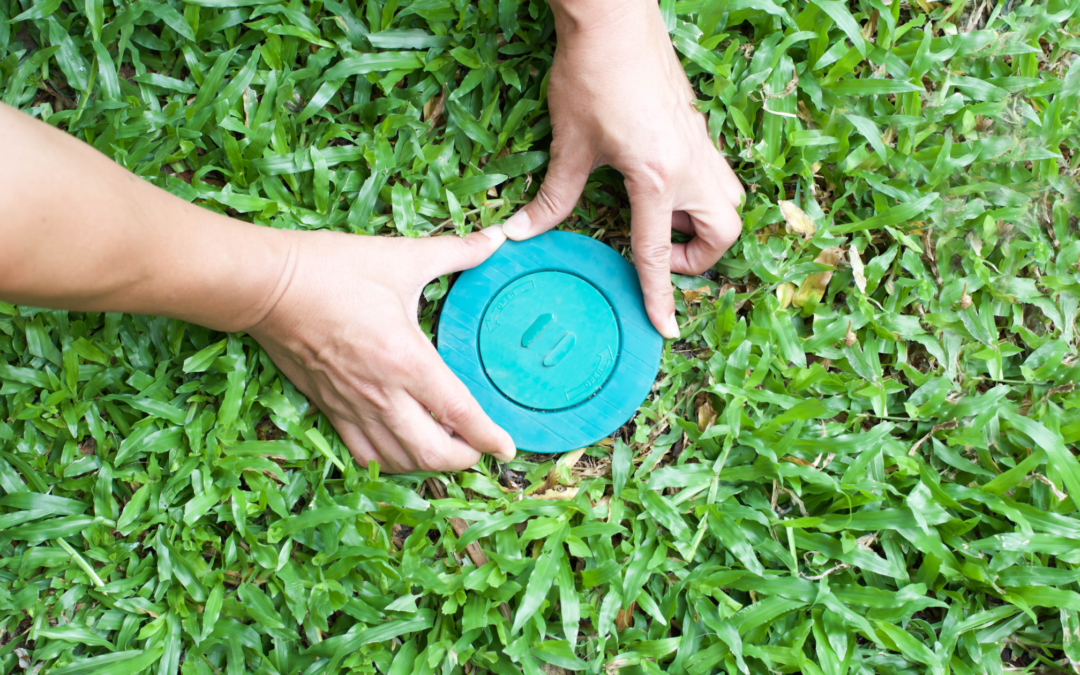
Termites can be a silent threat to the structural integrity of your home, and in Georgia, where the climate is conducive to termite activity, it’s essential to be proactive in termite control. In this blog post, we’ll explore how often you should treat for termites, common types of termites found in Georgia, signs of termite damage, the importance of annual inspections, preventive measures, and what to do if termites invade your home.
Georgia is home to several termite species, with the most common being subterranean termites, drywood termites, and Formosan termites. Each species poses unique challenges, making it crucial to understand their behavior for effective termite control.
Recognizing termite damage early is key to minimizing the impact on your home. Look out for hollow-sounding wood, mud tubes on exterior walls, discarded wings near windows and doors, and visible damage to wooden structures. If you notice any of these signs, it’s time to take action.
To stay ahead of potential termite infestations, annual inspections are a must. Professional termite control companies in Georgia offer thorough inspections to detect early signs of termite activity, providing peace of mind and safeguarding your investment.
Prevention is the first line of defense against termites. Keep woodpiles away from your home, ensure proper drainage to prevent water accumulation near the foundation, and seal any cracks or crevices in your home’s exterior. Additionally, consider opting for pressure-treated wood in construction projects.
Discovering termites in your home can be alarming, but swift action is crucial. Contact a reputable termite control company immediately. Professional pest control experts will assess the extent of the infestation, recommend a tailored treatment plan, and provide guidance on preventing future occurrences.
Protecting your home from termites requires a proactive approach. By understanding the types of termites, recognizing signs of damage, prioritizing annual inspections, implementing preventive measures, and seeking professional help when needed, you can ensure a termite-free living space. Take the first step in termite control – request a free quote and secure the longevity of your home.